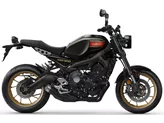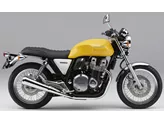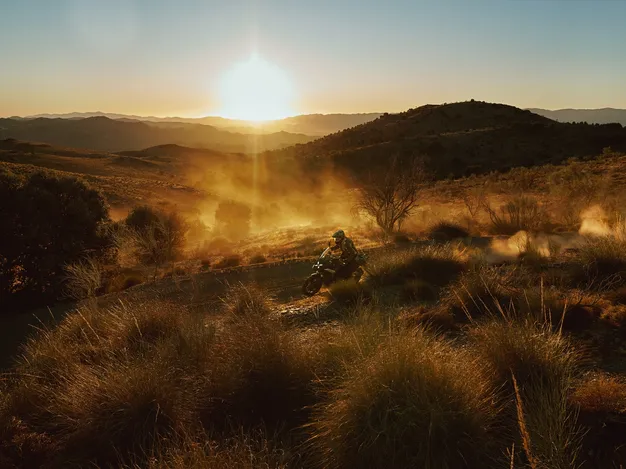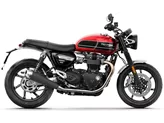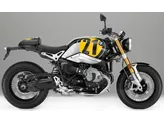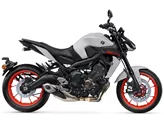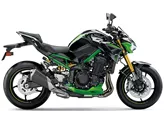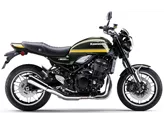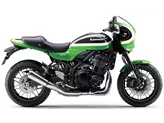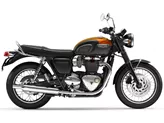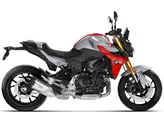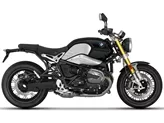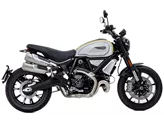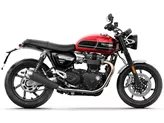Kawasaki Z900 RS 2018 vs. Kawasaki Ninja ZX-6R 636 2013

Kawasaki Z900 RS 2018

Kawasaki Ninja ZX-6R 636 2013
Overview - Kawasaki Z900 RS 2018 vs Kawasaki Ninja ZX-6R 636 2013
The Kawasaki Z900 RS 2018 and the Kawasaki Ninja ZX-6R 636 2013 are two different models with distinct characteristics and strengths.
Starting with the Kawasaki Z900 RS 2018, it boasts a powerful and smooth inline engine with a displacement of 948cc. With 111 horsepower and 98.6 Nm of torque, it offers impressive performance. The bike's engine is cooled by a liquid cooling system, ensuring optimal temperature regulation. The compression ratio stands at 10.8, contributing to the bike's power output.
In terms of suspension, the Z900 RS 2018 features an upside-down telescopic fork on the front, which can be adjusted for compression, preload, and rebound. The rear suspension also offers adjustment options for preload and rebound. The frame is made of steel, providing stability and durability.
When it comes to braking, the Z900 RS 2018 is equipped with double disk brakes on the front, with four pistons for added stopping power. The bike also features advanced rider assistance systems such as ABS, Ride by Wire, and traction control, enhancing safety and control.
In terms of dimensions and weights, the Z900 RS 2018 has a front tire width of 120mm and a rear tire width of 180mm, both with a diameter of 17 inches. The wheelbase measures 1470mm, and the seat height is 835mm. With a kerb weight of 215kg (including ABS), the bike offers stability and control. The fuel tank capacity is 17 liters, ensuring a decent range.

Kawasaki Z900 RS 2018
Moving on to the Kawasaki Ninja ZX-6R 636 2013, it features an inline engine with a displacement of 636cc. With 131 horsepower and 71 Nm of torque, it offers impressive power. The engine is also cooled by a liquid cooling system and has a compression ratio of 12.9.
The suspension setup of the Ninja ZX-6R 636 2013 is similar to that of the Z900 RS 2018, with an upside-down telescopic fork on the front and options for compression, preload, and rebound adjustments on both the front and rear suspensions. The frame is made of aluminum, providing a lightweight yet sturdy structure.
In terms of braking, the Ninja ZX-6R 636 2013 is equipped with double disk brakes on the front, with four pistons for efficient braking. The bike also features traction control as an advanced rider assistance system.
In terms of dimensions and weights, the Ninja ZX-6R 636 2013 has the same tire widths and diameters as the Z900 RS 2018. However, it has a shorter wheelbase of 1395mm and a slightly lower seat height of 830mm. The kerb weight, including ABS, is 194kg, making it lighter than the Z900 RS 2018. The fuel tank capacity is also 17 liters.

Kawasaki Ninja ZX-6R 636 2013
In terms of strengths, the Z900 RS 2018 offers a powerful and smooth engine, a stylish design, a comfortable seating position, and balanced handling. It is easy to ride and provides a stable and controlled experience without being overly responsive or sluggish.
On the other hand, the Ninja ZX-6R 636 2013 boasts sharpened geometry, a decent seating position, good handling, and uncompromising reliability.
As for weaknesses, the Z900 RS 2018 lacks a shift assistant, making gear changes less convenient. It is also heavier compared to other retro bikes in its class, and the seat may feel too soft on long tours. Additionally, it lacks wind protection, which may affect comfort during high-speed rides.
The Ninja ZX-6R 636 2013's main weakness lies in its high purchase price, which may be a deterrent for some potential buyers.
In conclusion, the Kawasaki Z900 RS 2018 and the Kawasaki Ninja ZX-6R 636 2013 are both impressive bikes with their own unique strengths and weaknesses. The Z900 RS 2018 excels in terms of power, comfort, and balanced handling, while the Ninja ZX-6R 636 2013 offers sharp handling, reliability, and a more aggressive riding experience.
Technical Specifications Kawasaki Z900 RS 2018 compared to Kawasaki Ninja ZX-6R 636 2013
Pros and Cons in comparison
Pros and Cons in comparison
Kawasaki Z900 RS 2018

Its four-cylinder is silky smooth while delivering enough power to make you grin under your helmet. It is also very easy to move, which should make it a great commuter bike in everyday life and serve as an iconic fun bike at the weekend. The looks find the perfect straddle of classic design and modern details to form a coherent retro package that is also a worthy tribute to Kawasaki history. It's a great naked bike with a snazzy look.
Kawasaki Ninja ZX-6R 636 2013

The Kawa convinces with its good handling and uncompromising reliability. A strong motorbike, but definitely not a bargain.
Price Comparison Avarage Market Price Kawasaki Z900 RS vs Kawasaki Ninja ZX-6R 636
There are a few key differences between a Kawasaki Z900 RS 2018 and a Kawasaki Ninja ZX-6R 636 2013. There are the same number of bikes of both models available on the 1000PS.de marketplace, specifically 28. It takes less time to sell a Kawasaki Ninja ZX-6R 636 with 122 days compared to 154 days for the Kawasaki Z900 RS. Since model year 2018 1000PS.de editors have written 26 reviews for the Kawasaki Z900 RS and 7 reviews for the Kawasaki Ninja ZX-6R 636 since model year 2013. The first review for the Kawasaki Z900 RS was published on 9/6/2017 and now has more than 63,700 views. This compares to more than 20,800 views for the first review on Kawasaki Ninja ZX-6R 636 published on 12/3/2012.


